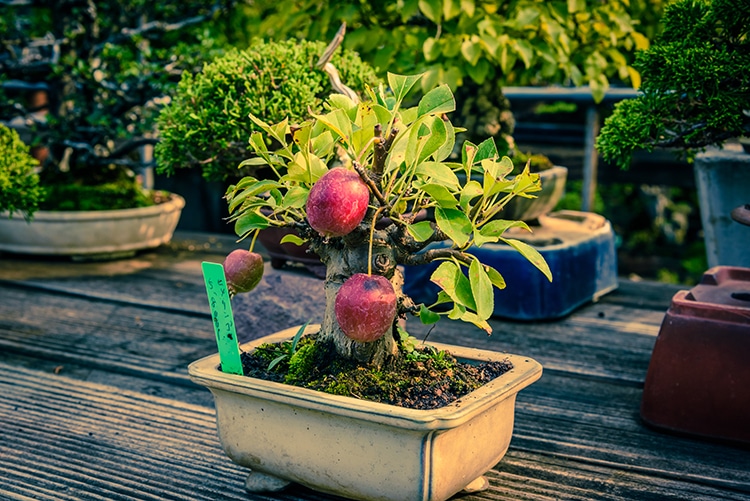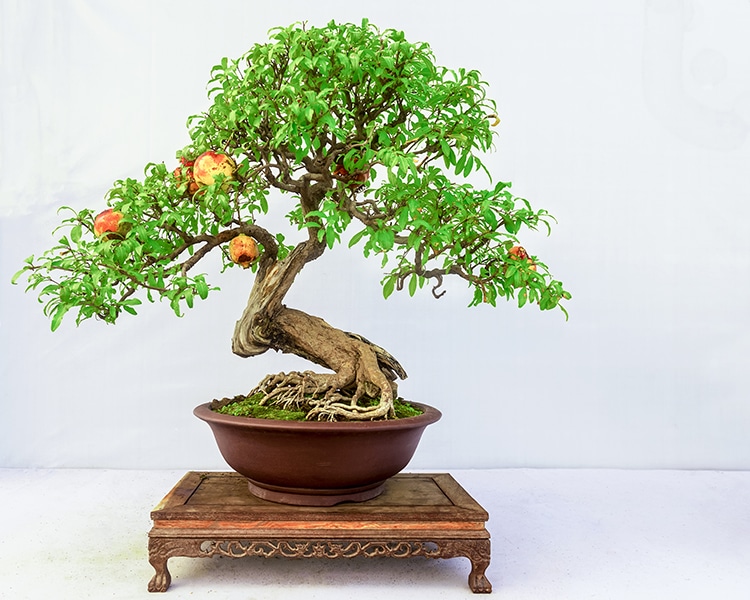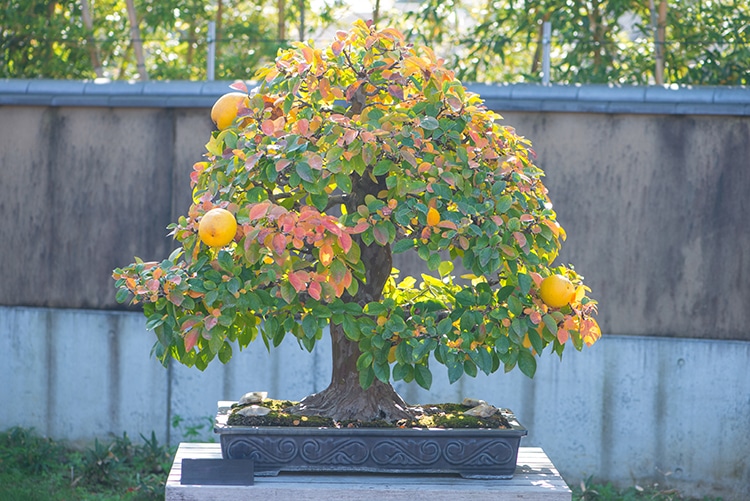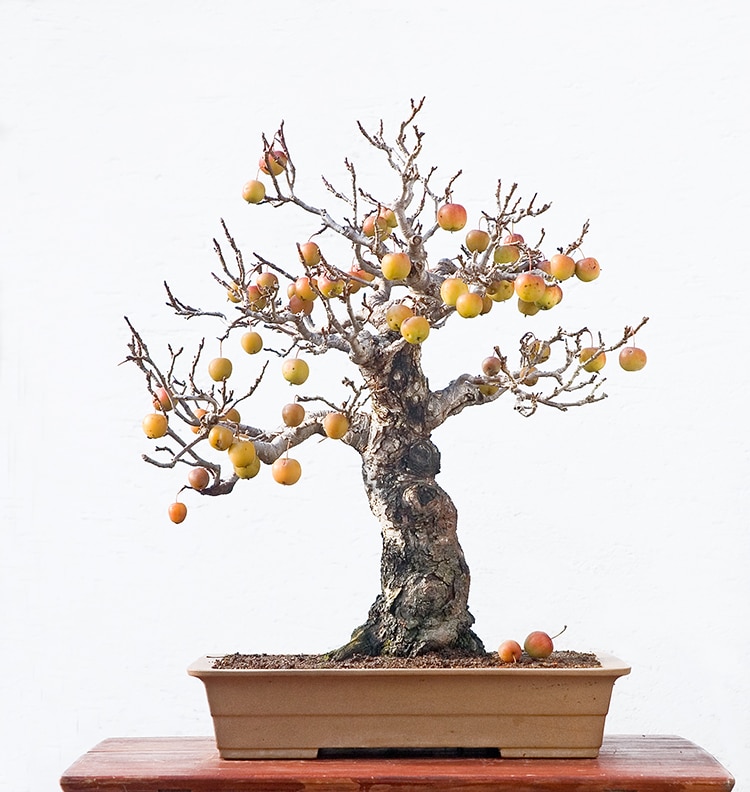A Bonsai apple tree.
Full-sized apples, lemons, and quinces grow on tiny Bonsai branches in a beautiful juxtaposition of size.
Most kinds of trees can become Bonsai trees with proper care and skill.

A Bonsai apple tree. (Photo:Stock Photosfrom ABHIJEET KHEDGIKAR/Shutterstock)
Bonsai is actually a Japanese tradition of trimming, cultivating, and training trees to remain miniature.
Rather than looking like a cutting of a larger plant, theleaves shrinkto appear miniature.
However, the fruits often remain large.

A pomegranate Bonsai tree. (Photo:Stock Photosfrom LILLIAN_GZ/Shutterstock)
Apples, lemons, quinces, olives, and pomegranates grow to normal size and are edible.
As a process, Bonsai encourages contemplation and discipline.
The cultivator must continually shape the tree with wire supports and pruning.

A Chinese quince Bonsai tree. (Photo:Stock Photosfrom KHUNTAPOL/Shutterstock)
Even the roots must be trimmed periodically to fit inside the classic small pots.
Learning about Bonsai trees and their intensive cultivation is advisable before purchasing one.
There are manytypesand shapes of Bonsai, each requiring differentcare strategies.

An olive Bonsai tree. (Photo:Stock Photosfrom PYTRALONA/Shutterstock)
Bonsai is a commitment of time and energy, but the trees can live hundreds of years.
The oldest known Bonsai are over1,000 years old.
Tiny Bonsai trees can bear full-sized fruit because they are genetically identical to normal-sized trees.

A star fruit Bonsai tree. (Photo:Stock Photosfrom HUY THOAI/Shutterstock)
A pomegranate Bonsai tree.
A Chinese quince Bonsai tree.
An olive Bonsai tree.

A crab apple Bonsai tree. (Photo:Stock Photosfrom WALTER PALL/Shutterstock)
A star fruit Bonsai tree.
A crab apple Bonsai tree.